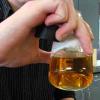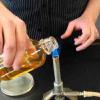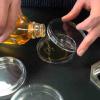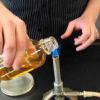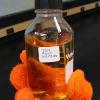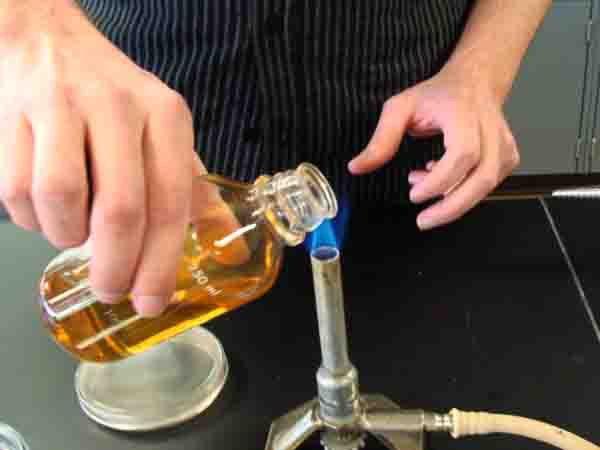 | ||||
How to Pour Growth Media into Petri Dish - P2
Sterilize the Neck of the TSY Bottle -
Step 3: Begin by removing the cap from the bottle of agar. The cap cannot be set down on the bench or held open-side-up. Doing either of these things can introduce bacteria into the cap; so one hand should be holding the bottle of agar, and the other holding the bottle cap, open side down.
Step 4: Slowly move the open neck of the agar bottle through the flame a couple of times. This ensures that the neck of the bottle is not contaminated.
Step 7: When finished, flame the neck of agar bottle immediately before recapping, and return the bottle to the warming oven.
Step 8: Do not move or disturb the poured plates for at least 15 minutes, or until the poured agar has completely cooled and solidified.
Step 9: If the plates are not to be used right away, place them in a lab refrigerator.
1. Uncap bottle of warm liquid agar. Be sure to hold cap open-side-down to avoid contamination from the environment; 2. Flame neck of the bottle; 3. Lift lid of the Petri dish only enough to pour 1/4" of agar into bottom of the dish; 4. Flame neck of the bottle;5. Recap bottle and return it to warming oven. Click on image to enlarge.
SPO VIRTUAL CLASSROOMS
SCIENCE VIDEOS
Page last updated:
8/2015
You have free access to a large collection of materials used in a college-level introductory microbiology course. The Virtual Microbiology Classroom provides a wide range of free educational resources including PowerPoint Lectures, Study Guides, Review Questions and Practice Test Questions.
The SPO website is best viewed in Microsoft Explorer, Google Chrome or Apple Safari.
VIDEO:
How to Aseptically Pour Bacterial Growth Media
Neck of TSY bottle being sterilized to prevent contamination.
PAGE 2 < Back to Page 1
End of Article < Back to Page 1
Pour Liquid TSY into Plates -
Step 5: To pour a plate, lift one side of the Petri dish top only far enough to pour agar into the bottom half. Do not take the top of the Petri dish off and place it on the bench. This will result in contamination.
Step 6: Only pour enough agar to fill ¼ inch of the bottom Petri dish. If too little is poured, the agar may dry out later when bacterial cultures are incubated. If too much agar is poured, the agar will take a long time to solidify. Two or three plates can be poured before that neck of the agar bottle needs to be flamed again.
Sources and Helpful Links
- Schauer Cynthia (2007) Lab Manual to Microbiology for the Health Sciences, Kalamazoo Valley Community College.
- Bauman, R. (2014) Microbiology with Diseases by Taxonomy 4th ed., Pearson Benjamin Cummings.
- Aseptic Technique and the Transfer of Microorganisms, Virtual Amrita Laboratories
 | ||||||
SPO is a FREE science education website. Donations are key in helping us provide this resource with fewer ads.
Please help!
(This donation link uses PayPal on a secure connection.)
